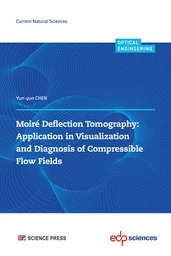About the Author ............................................ III
Preface..................................................... V
Notations................................................... VII
CHAPTER 1
Introduction................................................. 1
1.1 The First Part: Finite Iterative Algorithm to Linear Matrix Equation . 1
1.2 The Second Part: MCGLS Iterative Algorithm to Linear Matrix Equation............................................... 3
1.3 The Third Part: Explicit Solutions to Linear Matrix Equation ...... 5
CHAPTER 2
Finite Iterative Algorithm to Coupled Transpose Matrix Equations ....... 11
2.1 Finite Iterative Algorithm and Convergence Analysis ............. 12
2.2 Numerical Example ....................................... 24
2.3 Control Application ...................................... 27
2.4 Conclusions............................................. 28
CHAPTER 3
Finite Iterative Algorithm to Coupled Operator Matrix Equations withSub-Matrix Constrained .................................... 29
3.1Iterative Method for Solving Problem 3.1 ...................... 30
3.2Iterative Method for Solving Problem 3.2 ...................... 41
3.3 Numerical Example ....................................... 42
3.4 Control Application ...................................... 53
3.5 Conclusions............................................. 54
CHAPTER 4
MCGLSIterative Algorithm to Linear Conjugate Matrix Equation ........ 55
4.1 MCGL SIterative Algorithm and Convergence Analysis............ 57
4.2 Numerical Example ....................................... 66
4.3 ControlApplication ...................................... 73
4.4 Conclusions............................................. 74
CHAPTER 5
MCGLS Iterative Algorithm to Linear Conjugate Transpose Matrix Equation................................................... 75
5.1 MCGLS Iterative Algorithm and Convergence Analysis............ 78
5.2 Numerical Example ....................................... 90
5.3 Conclusions............................................. 95
CHAPTER 6
MCGLS Iterative Algorithm to Coupled Linear Operator Systems ........ 97
6.1 Some Useful Lemmas ..................................... 98
6.2 MCGLS Iterative Algorithm and Convergence Analysis............ 99
6.3 Numerical Examples ...................................... 107
6.4 Conclusions............................................. 113
CHAPTER 7
Explicit Solutions to the Matrix Equation X − AXB = CY + R .......... 115
7.1 Solutions to the Real Matrix Equation X − AXB = CY + R ....... 115
7.2 Parametric Pole Assignment for Descriptor Linear Systems by P-DFeedback ........................................ 124
7.3 Conclusions............................................. 128
CHAPTER 8
Explicit Solutions to the Non homogeneous Yakubovich-Transpose Matrix Equation................................................... 131
8.1 The First Approach ...................................... 132
8.2 The Second Approach ..................................... 140
8.3 Illustrative Example ...................................... 142
8.4 Conclusions............................................. 143
CHAPTER 9
Explicit Solutions to the Matrix Equations XB-AX = CY.......................................... 145
9.1 Real Matrix Equation XB − AX = CY and XB - AX = CY ........................ 145
9.2 Quaternion-j-Conjugate Matrix Equation XB − AX = CY......... 148
9.2.1 Real Representation of a Quaternion Matrix .............. 148
9.2.2 Solutions to the Quaternion j-Conjugate Matrix Equation XB − AX =CY ................................... 150
9.3 Conclusions............................................. 155
CHAPTER 10
Explicit Solutions to Linear Transpose Matrix Equation ................ 157
10.1Solutions to the Sylvester Transpose Matrix Equation ............ 157
10.1.1 The First Case: A or B is Nonsingular ................. 158
10.1.2 The Second Case: A and B are Nonsingular ............. 162
10.2 Solutions to the Generalized Sylvester Transpose Matrix Equation . . 165
10.3 Algorithms for Solving Two Transpose Equations and Numerical Example.............................................. 168
10.4 Application in Control Theory ............................. 174
10.5 Conclusions ............................................ 175
References.................................................. 177












